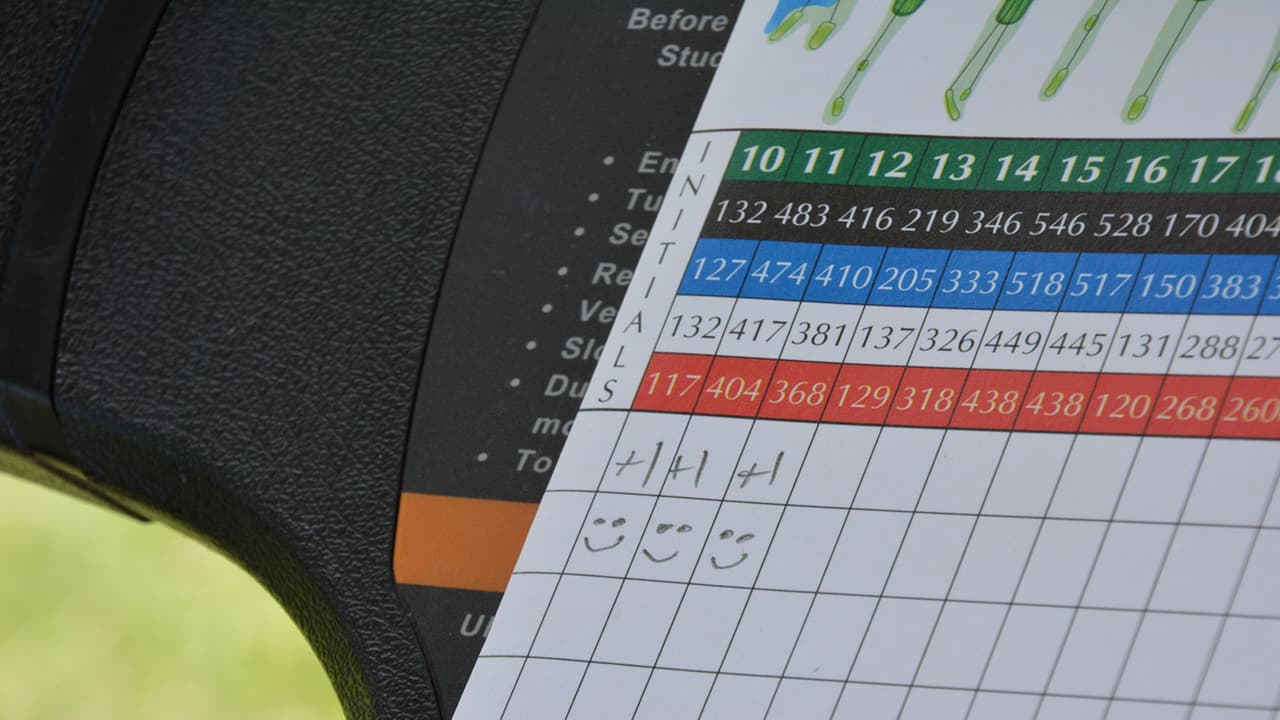Gymnastics Scoring? Your Ultimate Guide to How it Works
Gymnastics is an ideal sport for captivating and thrilling viewers worldwide with every leap, twist, and landing. But beneath the artistry lies a question, ‘how is gymnastics scored?’, that certainly gets fans scratching their heads more than once.
Q: How is it that the athlete with the amazing routine on one foot places second to someone whose dance moves look like they are tripping over themselves?
A: The answer lies in the scoring code: a rigorous framework that balances athletic difficulty with perfect execution.
Table of Contents
Gymnastics has welcomed an open-ended system to promote innovation and equity since the end of the “Perfect 10” era. Whether you are looking at the Olympics, NCAA meets, or your beginner’s first competition, having an understanding of how does the score counts makes the sport far more enjoyable.
The Basics of Gymnastics Scoring

Gymnastics is playing according to an international standard scoring system, by the FIG Code of Points. According to FIG, each routine comes under two main components:
- Difficulty Score (D-Score)
- Execution Score (E-Score)
The Final Score is therefore comes under evaluation together by these two.
Final score: D-Score + E-score – Neutral Deductions.
Difficulty Score (D-Score)
The D-Score reflects the difficulty of the routine. The scoring is from A at 0.1 points down to J at 1.0 points for each gymnastics trick.
For women’s artistic gymnastics, only the top 8 skills performed (dismount included) counted. In men’s artistic gymnastics (MAG), the top 10 skills are under evaluation.
D-Score includes three elements:
- Difficulty Value (DV): The point value of each skill.
- Composition Requirements (CR): Bonuses (usually 0.5 points) for completing required skill groups (e.g., dance elements on the floor, release moves on bars).
- Connection Value (CV): Additional credit for connecting harder gymnastics skills.
The open-ended nature of the questions means that the more difficult your routine, the greater your potential score.
Execution Score (E-Score)
All gymnasts begin with a perfect E-Score of 10.0. Judges deduct for mistakes:
- Slight error: –0.1 (e.g., a tiny step on landing)
- Medium error: –0.3 (e.g., bent arm or leg)
- Large error: –0.5 (e.g., balance check, big step)
- Fall: –1.0
While difficulty increases the ceiling, execution dictates the volume and finish. Even the hardest routine executed terribly may not beat a decent, slightly easier one.
Neutral Deductions
Judges may subtract neutral penalties on top of D + E for:
- Stepping out of bounds on the floor or vault
- Time violations
- Incorrect attire or routine requirements
How is Olympic Gymnastics Scored?

The Olympic Games use the FIG Code of Points, implemented by two panels of judges:
- D-Panel (Difficulty Judges): Track elements, assign difficulty values, and ensure they follow the composition rules.
- E-Panel (Execution Judges): Evaluate artistry, form, and technical execution.
How is the Final Score for Each Gymnast determined?
Here’s a simplified step-by-step:
- Routine is performed – Every skill is tracked in real-time.
- D-Score finalized – Only validity-completed elements count. Missed skills or falls can lower the difficulty.
- E-Score deductions applied – Errors in form, artistry, or control undergone subtraction from 10.0.
- Neutral deductions added – For out-of-bounds, time faults, etc.
- Final score announced – Example:
- D-Score = 6.2
- E-Score = 8.4
- Neutral = –0.1
- Final = 14.5
When scoring is equal, a gymnast with a higher Execution Score wins, as execution most accurately represents mastery.
How is Team Gymnastics Scored?
Group gymnastics injects yet another twist to the scoring game. Each competition uses different formats:
Olympics / World Championships (FIG format): Often 5-4-3 – five athletes per event, four routines performed, three scores count. It puts pressure on teams to have a specialist-versus-all-rounder balance.
You Might Like to Read: Gymnastics Gift Ideas – For All Aerobic Levels & Coach
NCAA format: Six athletes on each event, with the best five scores counting for the team. It means one mistake is avoidable, but consistent performance is key.
- For instance, NCAA Division I team scores typically range 197–198 out of a possible 200 NCSA College Recruiting.
At the Olympic level, dominant teams like the USA and China select gymnasts who complement each other across apparatus to maximize team points.
How is Women’s Gymnastics Scored?
Women’s Artistic Gymnastics (WAG) includes vault, uneven bars, balance beam, and floor exercise. Each apparatus has unique composition needs and deduction types:
- Vault: Scored based on height, distance, body position, and landing. A fall is a major penalty.
- Uneven Bars: This event involves transitions, release moves, and a challenging dismount. Most deductions add up from bent arms or missed handstands.
- Balance Beam: Artistry, leaps, and acrobatic series are critical. If you wobble or fall off, it counts as a major deduction.
- Floor Exercise: Combines tumbling with dance and choreography. You can only use music, but NO WORDS (Fig WAG Code).
Artistic deductions count for more in the women’s scoring – this encourages grace and style, not just power and speed, see NCAA women’s gymnastics.
How is Men’s Gymnastics Scored?
Men’s Artistic Gymnastics (MAG) consists of six activities: floor, pommel horse, still rings, vault, parallel bars, and high bar.
For the female gymnasts, everything is all about aesthetics; men’s routines are less focused on artistry and more on strength, control, and acrobatic difficulty.
- D-Score in MAG: Top 10 skills competed and composition requirements across element groups. On rings, for example, gymnasts must demonstrate strength elements, swings, and a controlled dismount (FIG MAG Code).
- E-Score in MAG: Judges deduct for bent arms, incorrect body lines, or labored swings. Execution is critical – especially on apparatuses like pommel horse, where a break in rhythm leads to large deductions.
Event-specific highlights:
- Pommel Horse: Scored heavily on rhythm, continuous movement, and use of both pommels.
- Rings: Deduction for shaking or bent arms in strength positions.
- High Bar: High-flying release moves can boost D-Score but increase the risk of deduction if caught poorly.
The men’s scoring showcases raw power and dynamic release skills, balancing strength elements with acrobatic daring, see NCAA men’s gymnastics.
How is Floor Gymnastics Scored?
The most popular event is the Floor exercise, but the score deduction could be different for men and women.
Women’s Floor
- May contain dance elements, leaps, turns & tumbling passes.
- Performed to music (instrumental only), with choreography that uses the full floor area.
- Execution deductions include artistry, rhythm, and connection issues, in addition to landing faults.
Related Pick: What do Gymnast Wear For Practice?
Men’s Floor
- Performed without music.
- Focuses on tumbling passes, acrobatic sequences, and strength moves.
- Judges look for clean landings, control, and balance between forward and backward elements.
They are neutral deductions of 0.1–0.3 points in both MAG and WAG due to running out of bounds (NBC Olympics).
How is Rhythmic Gymnastics Scored?
Rhythmic Gymnastics combines gymnastics, ballet, and dance performed with apparatus such as hoop, ribbon, clubs, and ball or rope, whilst artistic gymnastics is a discipline that focuses on tumbling.
Scoring consists of:
- Difficulty (D): Observing body movements, handling apparatuses, and risks.
- Execution (E): Deducts for form errors, apparatus drops, or weak artistry.
- Artistry (A): Evaluates musicality, creativity, and harmony between gymnast and apparatus.
Common penalties include:
- Apparatus leaving the floor area (−0.5 or more).
- Drops or loss of apparatus.
- Incomplete use of space.
Rhythmic gymnastics is an Olympic discipline by FIG, and top athletes are ranking from 18–20 points per routine under its unique code.
NCAA & College Gymnastics Scoring Explained
The point system does not follow the same as Olympic scoring; it is in U.S. collegiate gymnastics. The “Perfect 10” system still exists, instead of open-ended scores.
How It Works:
- Routines start from a base value (e.g., 9.500)
- Gymnasts can increase their start value to 10.0 by including essential skills or bonus connections.
- Judges deduct for form, artistry, or landing problems.
- Final scores range between 9.700 and 10.000.
Team Format:
- Six athletes perform per event.
- The team’s total score is the sum of its top-five racers’ scores.
- Winning teams often achieve combined totals near 197–198 out of 200.
Why the Perfect 10 No Longer Exists?

Routines were capped at 10.0 until 2006. However, as gymnasts like Nadia Comăneci and later Simone Biles continued to redefine physical boundaries, FIG eventually turned to an open-ended scoring system.
Which is why, these days, final scores for elite athletes are usually in the 13.000 through to 15.500 range. Marks exceeding this figure are indicative of exceptional difficulty and excellent execution.
For Example, Simone Biles’s Yurchenko Double Pike Vault
- D-Score: Extremely high due to unprecedented difficulty.
- E-Score: Judges deduct for landing steps and body alignment.
Combined, this vault gets scores of 15+ being one of the best women in sports. Something women’s gymnastics sees maybe once in a blue moon.
Inquiries and Appeals
Coaches may file an inquiry at the Olympics if there is evidence that the D-Score was unfair. It costs, you get the money back only if your challenge wins! Execution scores, on the other hand, are final.
Perfect 10 Controversy
Although many fans appreciate the NCAA system, sometimes it sparks debate.
- Athletes such as Trinity Thomas and Mara Titarsolej have scored perfect 10s across multiple events.
- Critics argue the system inflates scores and leaves little room to separate perfect routines from very good ones (FanSided).
However, the Perfect 10 system is a favourite among fans because it gives clarity and excitement for a more general audience.
Common Misconceptions About Gymnastics Scoring
“A fall means zero points in gymnast scoring.”
Not true. This is a 1.0 deduction, not an automatic zero, unless she came to a complete stop without completing the skill (ie, running full speed into the vault table without attempting).
“All competitions use the same scoring system.”
False. NCAA competitions still use the old Perfect 10 scoring, while FIG elite can score bonus points due to the current open-ended Code of Points. Some meets, such as local or age-level meets, may modify events into long-course events.
“Perfect routines don’t exist anymore.”
Scoring in elite gymnastics is no longer limit at 10. A perfect E-Score of 10.0 is still possible, indicating flawless execution. NCAA still awards Perfect 10s all the time.
While these myths fuel confusion, understanding the structure helps fans appreciate subtle scoring nuances.
How Judges Stay Fair and Consistent?

Gymnastics judging is not subjective guesswork; it’s tightly under regulation;
- Judging Training & Certification: All judges are certified by FIG (international), USA Gymnastics (domestic), or NCAA organizations. They undergo exams and must demonstrate accountability.
- Panel Scoring: Multiple judges judge a routine. The top and bottom scores are out of the execution, and only an average of the middle scores is considerable to help mitigate bias.
- Appeals & Inquiries: Again, in the top gymnastics levels, only the difficulty can be compete able.
- Accountability: In the NCAA, independent panels grade the performance of judges to avoid inflation and inconsistency.
The ideas are to prevent any judge from corrupting the results and to ensure that gymnasts score well based on both skill and execution.
FAQs
Gymnastics has not scored in the “perfect 10” system since 2006. Olympic gymnastics scoring is open-ended; the Difficulty (D) score has no upper limit, while the Execution (E) score starts at 10. They are added together, so there is no maximum. Some of Simone Biles’ routines can score upwards of 15 to 16+, depending on difficulty.
The difficulty preserving the 10 with more advanced routines led to the end of the perfect 10 system following the 2004 Athens Olympics. In 2006, FIG established an open-ended scoring system to favor more difficult routines while avoiding execution errors. This enables athletes to go beyond the boundaries of gymnastics.
NCAA (college) gymnastics is unique as it uses the 10.0 system, each routine starting from a 10, with deductions taken for mistakes. So NCAA gymnastics, again, is relatable to viewers and keeps it dramatic since you can still see the “perfect 10” routines. The second is the open-ended D + E scoring system used in Olympic/FIG gymnastics.
Artistry is a key part of both women’s artistic gymnastics and rhythmic gymnastics. Point deduction happens for not showing expression, poorly choreographing a dance, or if parallel skills appear awkward. That artistry can make or break a score – and it is possible to perform all technical skills correctly and still have a lower score than their less-artistic competitors.
Conclusion
So, how is gymnastics scored? It’s a careful balance:
- Difficulty brings out innovation, complexity, and daring in skills.
- Execution is rewarded by grace, elegance, and artfulness.
- Team formats and competition levels add further nuance.
The system is open-ended and modern in the Olympics, rewarding cutting-edge routines, while the traditional ”Perfect 10” still stands in the NCAA. A perfect gymnastics score reflects that beautiful connection between human athleticism and artistry – itself an ode to judge-less perfection.
You Might Like to Read: Understanding Gymnastics Injuries & How to Avoid Them?
When fans can learn these rules, the sport is transformed into something greater than spectating – it becomes a strategic high-adrenaline war of accuracy and imagination.
So the next time you see a gymnast nail her landing or wobble slightly on beam, now you can count up those deductions and understand why, at least some of the time, clean & consistent wins over flash.
